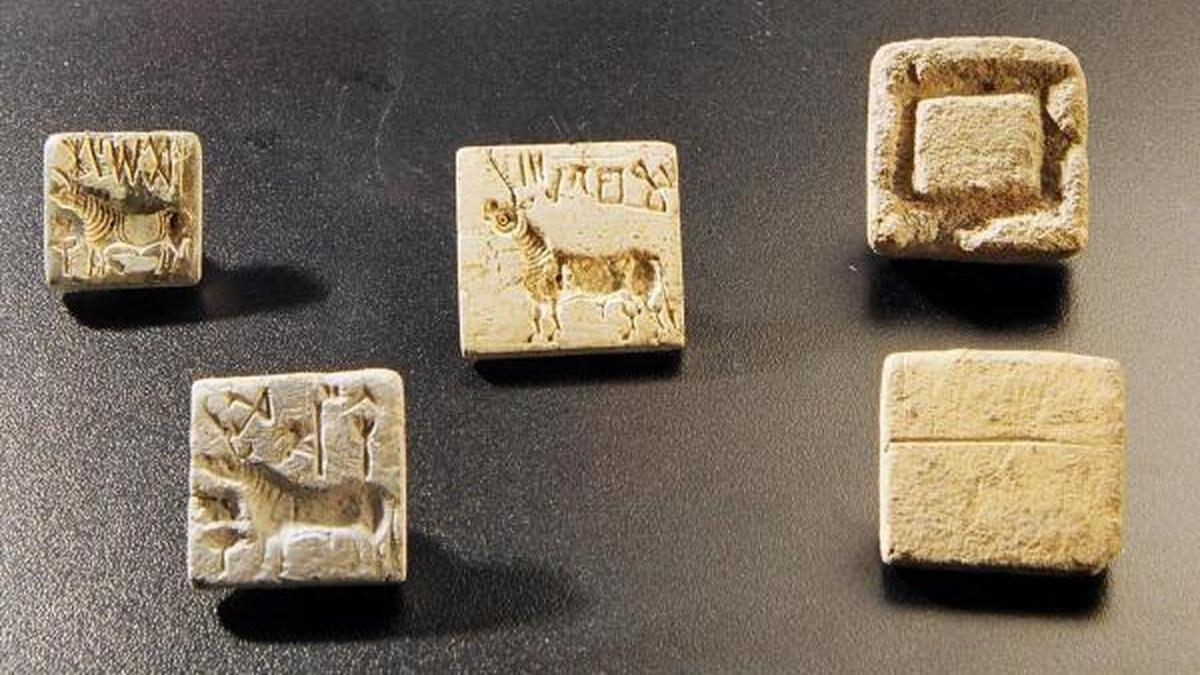
Column | When Harappans had unicorns
The Hindu
The one-horned unicorn appears on the ancient Harappan civilisation’s seals and points to possible links between merchants and monks
A hundred years ago, on September 20, 1924, the world learned about the Indus (Harappan) civilisation for the first time when John Marshall, then director general of the Archaeological Society of India, wrote about it in The Illustrated London News. It was based on two similar seals found first in Harappa and then in Mohenjo-daro, cities separated by over 500 km. The dating was actually done through a ‘Letter to the Editor’ by Professor A.H. Sayce on September 27, 1924. He recognised the seals as identical to those he had found in Sumer, dated to 2300 BC.
Originally described as Indus-Sumerian, it was soon clear that this civilisation had developed independently, and so was renamed Indus. But with sites found beyond Indus, in the mountains of Afghanistan in the west, the dry river bed of the Ghaggar-Hakra in the east, and the coast of Gujarat in the south, the civilisation is now named after the first city discovered — Harappa.
Now, we know that these cities played a key role in the supply of the much-in-demand lapis lazuli — the deep blue semiprecious stone used in sacred ornaments — and tin, which was needed to make the alloy bronze. Both raw materials were obtained from Central Asia and from present-day Afghanistan. It was processed in sites located on the banks of the river Indus, and were transported by boats from the Gujarat coast up the Makran and Persian coasts to Oman, from where it made its way to markets in Mesopotamia, Egypt and even the island of Crete.
Proof of mythic thinking
Harappans used seal-based administrative technology like the Mesopotamians. The most common seal — almost 80% of the 2,000-odd ones found till date in the wide area — has the image of a one-horned bull-like creature, the unicorn. Clay figurines of this creature prove that this is not simply a bull in profile. The Harappans imagined this fantastic creature, and fantastic imagery is proof of mythic thinking.
People have been wondering what these unicorns are, and the clue may lie in architecture. Harappan cities are stark and utilitarian, lack any display of wealth and power, and seem rather egalitarian, despite the use of words such as ‘citadel’ to describe the gated community with common facilities. Could it be a monastery, or the temporary residence of wandering monks who regulated trade and resolved disputes between competitive trading communities, each with its own seal? The famous ‘horned-sage’ seal was probably a representation of these monks, and may have been a unicorn — a beast not found in nature, not aligned to any clan, embodying the transcendent nature of those who shunned wealth and power. This merchant-hermit connection could explain why the elite of the Harappan civilisation shunned every cultural tool of intimidation from monumental art to elaborate tombs, which were hallmarks of contemporary Egyptian and Mesopotamian civilisations.
Mercantilism and monasticism

The Leela Palace Chennai presents the seven edition of Shefs at The Leela in collaboration with ‘Dean With Us’ — the mother-daughter duo of Rupali and Akansha Dean. The event honours the transformative role of Indian women chefs who are shaping the future of gastronomy. After past editions hosted across Bengaluru, Gurugram, Chennai, and Jaipur, the seventh edition in Chennai will bring together four women chefs — Sambhavi Joshi, Taiyaba Ali, Sehaj Ghuman and Bunuma Patagiri, who will bring their years of expertise into curating a menu that speaks both of their work and India’s diverse culinary heritage.





















 Run 3 Space | Play Space Running Game
Run 3 Space | Play Space Running Game Traffic Jam 3D | Online Racing Game
Traffic Jam 3D | Online Racing Game Duck Hunt | Play Old Classic Game
Duck Hunt | Play Old Classic Game










